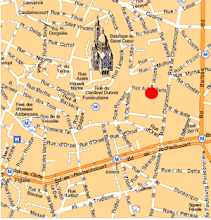By Edward Wong
Thursday, October 30, 2008
BEIJING: Nine families with babies suffering kidney problems, allegedly because of contaminated milk, have filed separate lawsuits against one of China's largest milk companies, according to lawyers representing the families. They are the latest lawsuits to be filed in China's worst food safety scandal in years.
The lawsuits were filed on Wednesday in the northern city of Shijiazhuang, the location of the headquarters of Sanlu Group, a company at the center of the milk scandal. The lawsuits demand compensation from Sanlu.
The milk scandal and the lawsuits have become politically sensitive matters, and so far no judge has agreed to hear a case in court. At least three other lawsuits had already been filed before Wednesday.
Both product liability lawsuits and class-action lawsuits are rare in China. This means that Chinese consumers have one less layer of protection against defective practices by big companies if governmental regulatory processes fail, as they have in many recent food and product safety cases, some legal scholars say.
The milk scandal first emerged in September, when it was revealed that babies drinking milk formula tainted with a toxic chemical called melamine had developed kidney stones. Melamine had been illegally added to dairy products to artificially boost protein counts to meet nutrition standards.
At least four babies have died and at least 53,000 other children have fallen ill, according to reports from official news agencies.
Since September, a wide range of food products from China have been discovered to have melamine, from yogurt and eggs to biscuits. Countries around the world have ordered recalls of Chinese-made food products suspected of being tainted with melamine.
Senior government officials and company executives have been fired as the scandal has widened, and dozens of people suspected of being involved have been arrested.
Given the Communist Party's sensitivities over the scandal, many lawyers in China do not have high hopes that the lawsuits will get a fair hearing in the courts, if they are heard at all.
The families, which are from several provinces, hope that the central government will eventually provide some sort of compensation for the ill children, said Ji Cheng, a lawyer with the Deheng Law Office, a large firm based in Beijing that is representing the nine families.
Each family had an infant that had to go to the hospital because of kidney stones, and six are still in the hospital, Ji said. The families have kept hospital records and complete records of their purchases of Sanlu baby formula, he added. The families are asking for at least 14,000 yuan, or about $2,000, per child in compensation payments from Sanlu.
Ji said the lawyers did not file a class-action lawsuit on behalf of all the parents because each case had different details.
Class-action lawsuits are highly discouraged in the Chinese legal system. Technically they can be filed, but onerous rules put in place in recent years by official legal bodies have made it difficult for lawyers to file such lawsuits. Some Chinese legal scholars say the government views class-action lawsuits as a threat to social stability.
Over the course of the milk scandal, some lawyers have been discouraged from representing families seeking damages from dairy companies or from the government.
In the first weeks of the scandal, more than 100 lawyers put themselves on a list of lawyers volunteering to dispense legal advice to the families. But at least two dozen have since dropped their names from the list; most of them are from Henan Province, where lawyers have complained of subtle pressure put on them by local officials.
Huang Yuanxi contributed research.

A Place in My Country
Ian Walthew
Farm Blogs
Ranch Blogs
Rural Blogs
Countryside Blogs
Smallholding Blogs
Urban Homesteading Blogs
Homesteading Blogs
Homestead Blogs
Allotment Blogs
Apiculture Blogs
Bee-keeping Blogs
Auvergne
Auvergnate
Auvergnat
Auvergnats
France
Rural France
Blogs about France
Paris / Montmartre/ Abbesses holiday / vacation furnished apartment rental







































